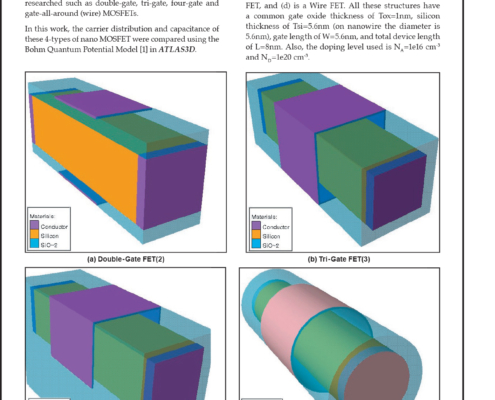
Comparison of 3-Dimensional Quantum Effects in Nano Devices Using the Atlas 3D BQP Model
Introduction
With the MOSFET gate lengths scaling down to sub-20nms many kinds of devices have been proposed and researched such as double-gate, tri-gate, four-gate and gate-all-around (wire) MOSFETs.
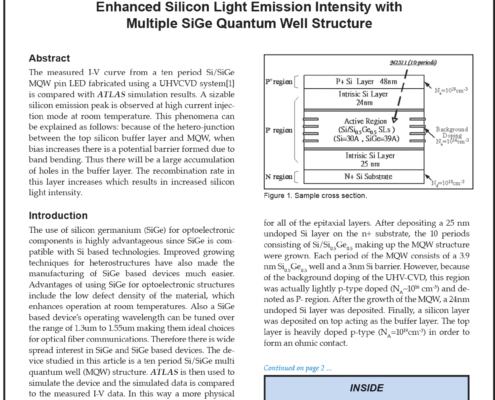
Enhanced Silicon Light Emission Intensity with Multiple SiGe Quantum Well Structure
Abstract
The measured I-V curve from a ten period Si/SiGe MQW pin LED fabricated using a UHVCVD system is compared with ATLAS simulation results. A sizable silicon emission peak is observed at high current injection mode at room temperature. This phenomena can be explained as follows: because of the hetero-junction between the top silicon buffer layer and MQW, when bias increases there is a potential barrier formed due to band bending. Thus there will be a large accumulation of holes in the buffer layer. The recombination rate in this layer increases which results in increased silicon light intensity.
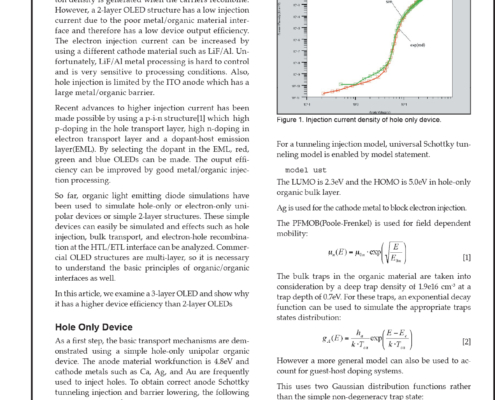
Multi-layer Organic Light Emitting Diode Simulation
A conventional 2 layer organic light emitting diode consists of a Hole Ttransport Layer (HTL) and an electron transport layer (ETL). A good OLED structure requires sufficient carrier injection so that large exciton density is generated when the carriers recombine. However, a 2-layer OLED structure has a low injection current due to the poor metal/organic material interface and therefore has a low device output efficiency. The electron injection current can be increased by using a different cathode material such as LiF/Al. Unfortunately, LiF/Al metal processing is hard to control and is very sensitive to processing conditions. Also, hole injection is limited by the ITO anode which has a large metal/organic barrier.
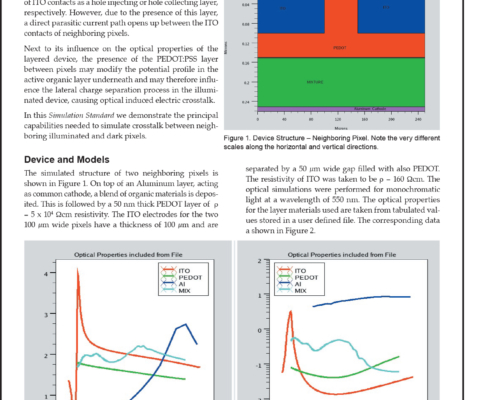
Crosstalk Between Pixels of Organic Photo-Voltaic Devices
For various technological reasons, LEDs and as well as photo-voltaic devices frequently use PEDOT:PSS on top of ITO contacts as a hole injecting or hole collecting layer, respectively. However, due to the presence of this layer, a direct parasitic current path opens up between the ITO contacts of neighboring pixels.
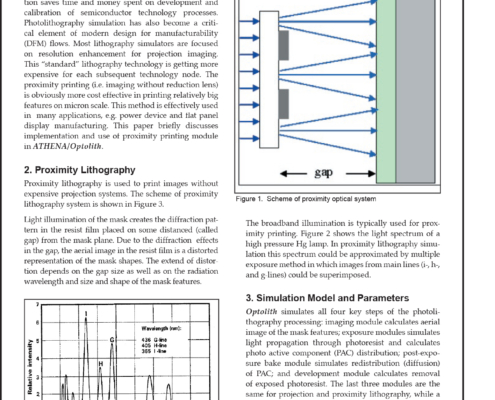
Athena/Optolith Simulation of Proximity Lithography
Photolithography simulation is a very important part of TCAD. Accurate and predictive lithography simulation saves time and money spent on development and calibration of semiconductor technology processes.
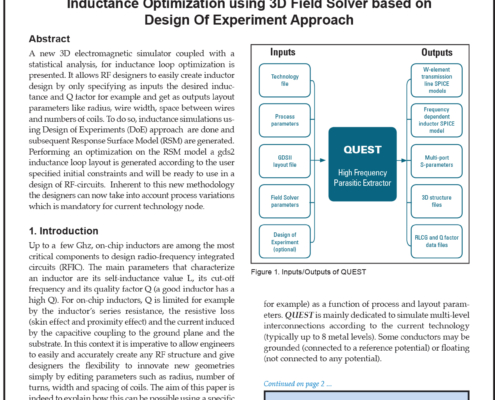
Inductance Optimization using 3D Field Solver based on Design Of Experiment Approach
A new 3D electromagnetic simulator coupled with a statistical analysis, for inductance loop optimization is presented. It allows RF designers to easily create inductor design by only specifying as inputs the desired inductance and Q factor for example and get as outputs layout parameters like radius
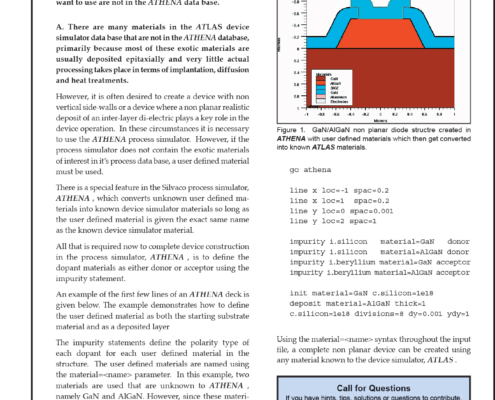
How can I create a non planar structure using III-V materials for Device Analysis
How can I create a non planar structure using III-V materials for Device Analysis when the materials I want to use are not in the ATHENA data base.
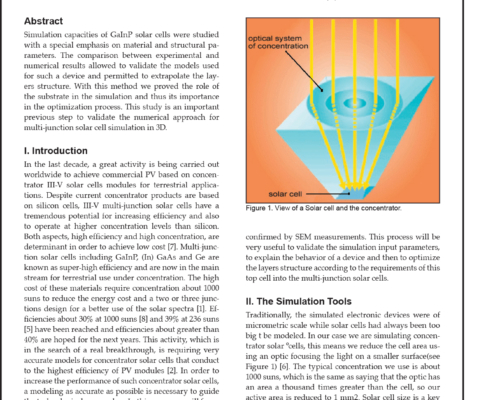
Numerical Analysis of GaInP Solar Cells: Toward Advanced Photovoltaic Devices Modeling
Simulation capacities of GaInP solar cells were studied with a special emphasis on material and structural parameters. The comparison between experimental and numerical results allowed to validate the models used for such a device and permitted to extrapolate the layers structure. With this method we proved the role of the substrate in the simulation and thus its importance in the optimization process. This study is an important previous step to validate the numerical approach for multi-junction solar cell simulation in 3D.
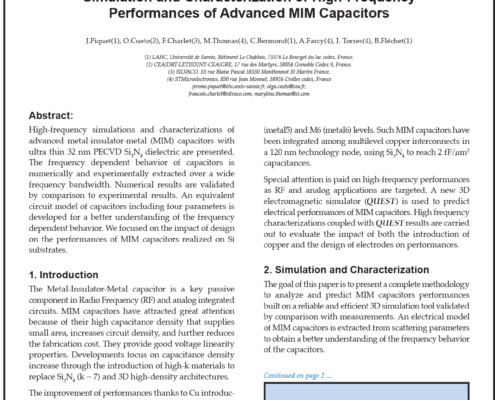
Simulation and Characterization of High-Frequency Performances of Advanced MIM Capacitors
Abstract:
High-frequency simulations and characterizations of advanced metal-insulator-metal (MIM) capacitors with ultra thin 32 nm PECVD Si3N4 dielectric are presented. The frequency dependent behavior of capacitors is numerically and experimentally extracted over a wide frequency bandwidth. Numerical results are validated by comparison to experimental results. An equivalent circuit model of capacitors including four parameters is developed for a better understanding of the frequency dependent behavior. We focused on the impact of design on the performances of MIM capacitors realized on Si substrates.
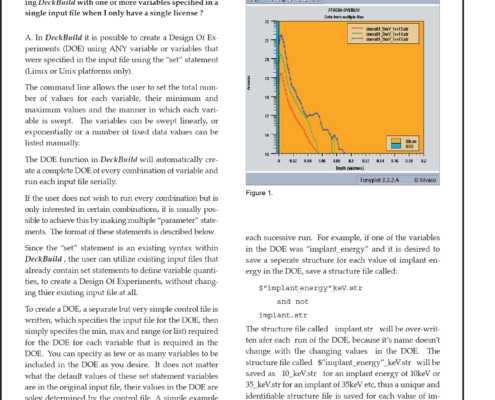
How can I create a Design Of Experiments (DOE) using DeckBuild with one or more variables
How can I create a Design Of Experiments (DOE) using DeckBuild with one or more variables specified in a single input file when I only have a single license?
